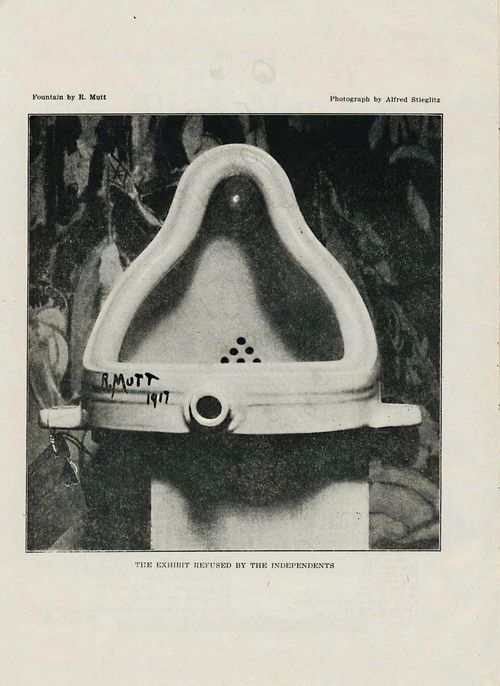JF Ptak Science Books Post 2085 Blank, Empty & Missing Things series
![]()
“All in all, the creative act is not performed by the artist alone.. the spectator brings the work in contact with the external world by deciphering and interpreting its inner qualifications and thus adds his contribution to the creative act.” (Marcel Duchamp)
I guess to this quote you could replace "spectator" with just about anything else, including the object that is the art.
This ten-minute missive came from a post a few days ago (Napkins of the Apocalypse) where I located the ultimate end of the American civil defense experience during the Cold War--in the spindle hole of a survival LP issued by a trashy-thready record label in 1962. I wondered if the hopes/dream/prayers of that episodic horrorshow belonged more in the Blank/Missing/Empty or the Holes series of this blog...and where that dark hole fit.

[Image source: Stephen Hicks]
The hole re-appeared this morning while doing the dishes, the drain in the sink sparking a vision of "FiVah" (or "Five A", anti-art's anti-anti-artist) Marcel Duchamp and his iconic found art sculpture "Fountain". It is of course the most famous urinal in the history of urination (I can't speak to famous urinals in non-urinating history) which Duchamp signed "R.Mutt" in 1917 to make it his own. Art.
There are many missing qualities to this artwork that allows it to slide right into this blog's Blank, Empty and Missing Things series, not the least of which is that the first "Fountain" went missing almost immediately. It was rejected from a major show of Duchamp's colleagues, and left a footprint of itself with a blank exhibition card dispaly, nonchalantly photographed in front of a Marsden Hartley painting. It was a shocking piece of art that lead and still leads to debate on what is art and what is not, especially so far as "original" artwork is concerned.
"Fountain" has/had a number of questions about originality--as a concept it was certainly original, in the use of found object as a piece of sculptural art, and of course in its own self, being a urinal and all. Then there's the question of this original idea being so but being hosted in a stock/standard item that was hardly an original construction--it was a simple porcelain object from an assembly line production. that said, even though this was not original when it came to replacing the lost not-original original it proved to be very difficult, at least it was back then in the nineteen-teens.
The urinal that replaced the missing urinal was not quite right, and so was not the not-original original replacing the not-original non-art that was a great original idea.
"Fountain" reminded people of a Buddha; it was hung in various unusual places and its iterations shown in exhibitions far-and-wide, including a very early Dada exhibit where one of them was hung from the ceiling of the gallery with a piece of Mistletoe attached, perhaps in a Duchampian way telling people to "kiss off".
So this great instigator and Jimmy-Hoffa-of-Artworks was missing on many levels--it was a mass-produced private work that was censored by its artist's peers, and original piece of art that wasn't itself original and that went missing almost as soon as it was created.
It has everything in nothing going for it.



Comments